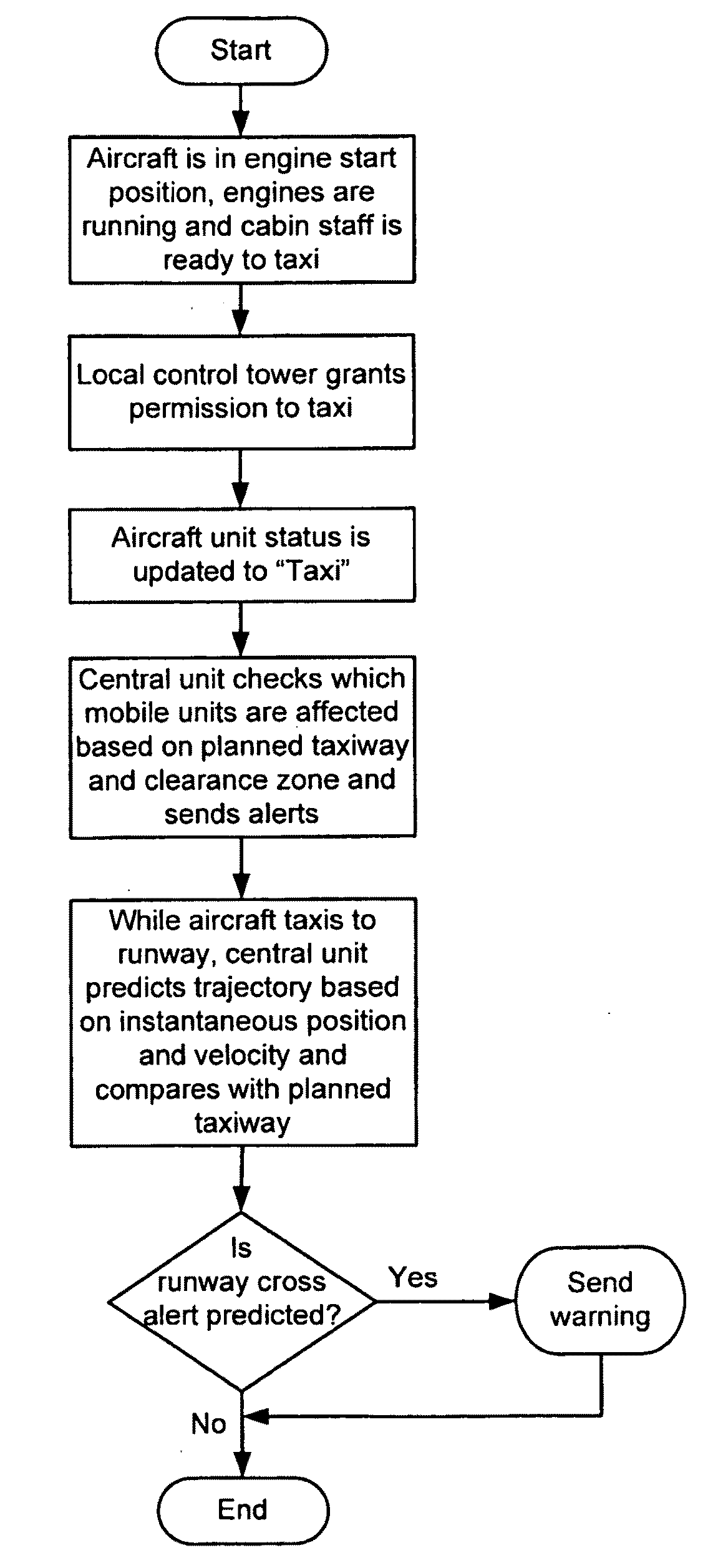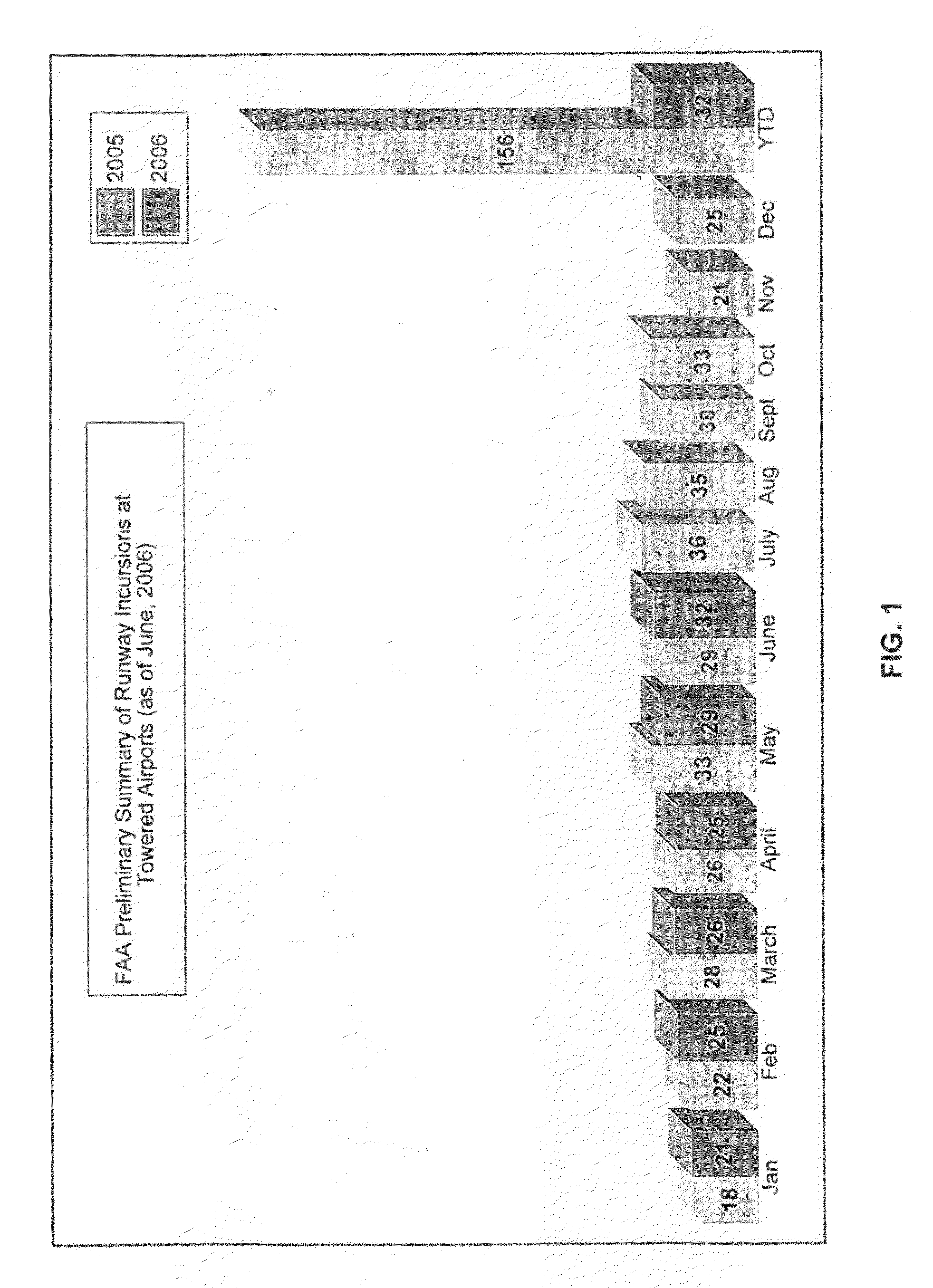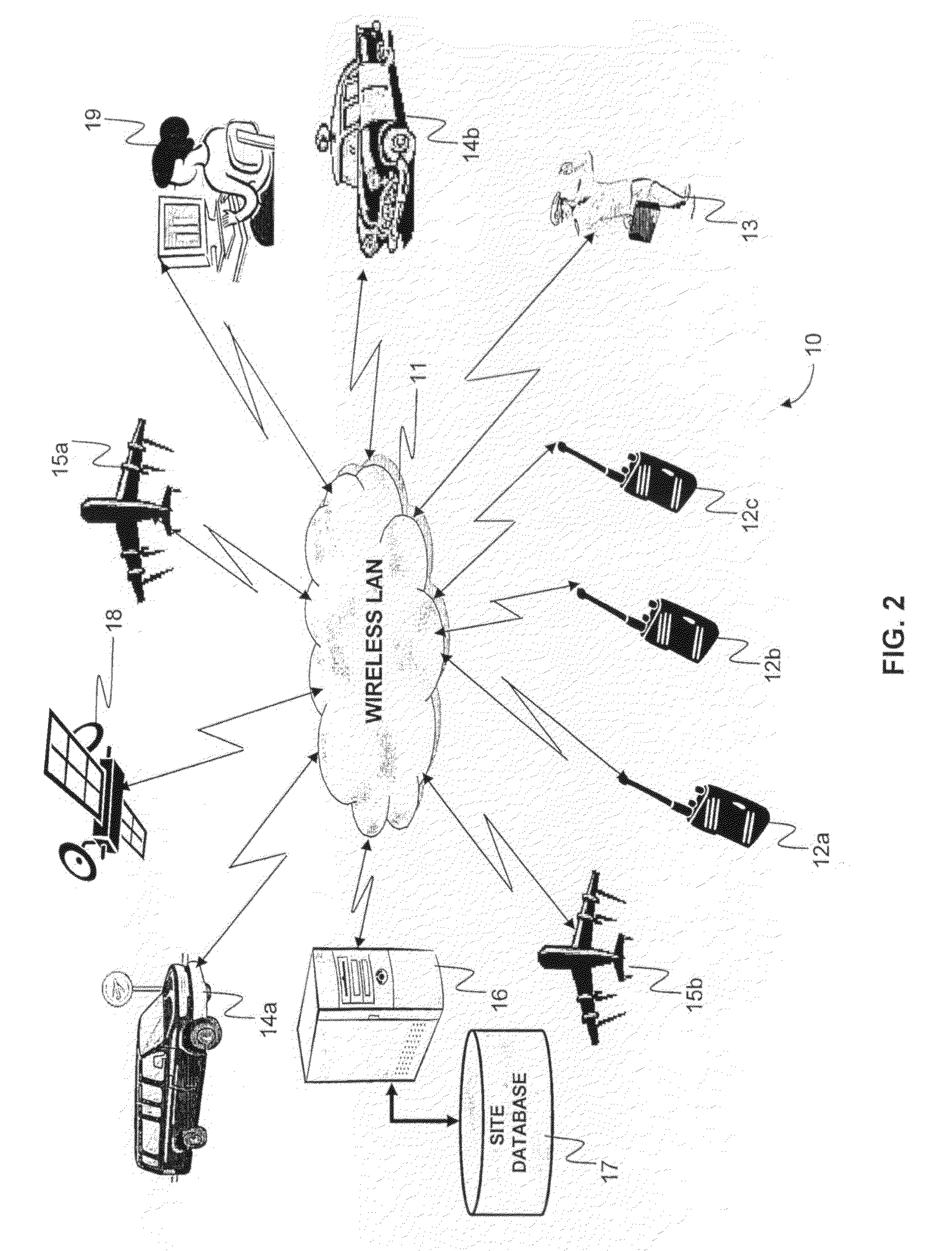Aircraft Anti-collision system and method
a technology of anti-collision system and aircraft, which is applied in the direction of aircraft traffic control, aircraft ground control, instruments, etc., can solve the problems of increasing the possibility of airport and runway collision, increasing the likelihood of runway intrusion, and aircraft that is taking off or landing at high speed may be too fast for the gps system, so as to prevent inter-symbol interference or significantly reduce the relative delay between users.
- Summary
- Abstract
- Description
- Claims
- Application Information
AI Technical Summary
Benefits of technology
Problems solved by technology
Method used
Image
Examples
Embodiment Construction
[0080]In the following description of an embodiment of the invention, components that appear more than once in the drawings will be referenced by common numerals. Components that appear more than once in the same drawing will be referenced by a common base numeral (e.g. 12) and different instances will be suffixed ‘a’, ‘b’, ‘c’ etc. Where such components are referred to generically, they will referenced by the base numeral.
[0081]FIG. 2 is a pictorial representation showing schematically an airport anti-collision system 10 comprising a wireless LAN 11 and a plurality of mobile trans-ponders (also referred to as subscriber units or mobile units) 12a, 12b and 12c that may be carried by personnel 13 or by service vehicles 14a and 14b. Similar mobile transponders may likewise be embedded within aircraft 15a and 15b. The transponders 12 may be mounted in the service vehicles 14 and aircraft 15 or their functionality may be built into the electronics of the service vehicles 14 and aircraft...
PUM
 Login to View More
Login to View More Abstract
Description
Claims
Application Information
 Login to View More
Login to View More - R&D
- Intellectual Property
- Life Sciences
- Materials
- Tech Scout
- Unparalleled Data Quality
- Higher Quality Content
- 60% Fewer Hallucinations
Browse by: Latest US Patents, China's latest patents, Technical Efficacy Thesaurus, Application Domain, Technology Topic, Popular Technical Reports.
© 2025 PatSnap. All rights reserved.Legal|Privacy policy|Modern Slavery Act Transparency Statement|Sitemap|About US| Contact US: help@patsnap.com



